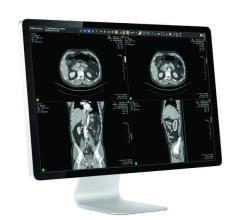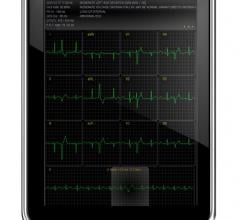March 1, 2013 — To address the rising costs of healthcare, we must improve the way that health care is delivered, including coordinating care better and improving the safety of care, stated the Centers for Medicare and Medicaid Services (CMS) in its assessment of healthcare reform, released Feb. 28.
The Affordable Care Act includes steps to improve the quality of healthcare and, in so doing, lowers costs for taxpayers and patients, CMS states. This means avoiding costly mistakes and readmissions, keeping patients healthy, rewarding quality instead of quantity and creating the health information technology infrastructure that enables new payment and delivery models to work. According to CMS, these reforms and investments will build a healthcare system that will ensure quality care for generations to come.
CMS outlined several areas of progress:
Healthcare Spending is Slowing
According to the annual Report of National Health Expenditures, total U.S. health spending grew 3.9 percent in 2011. That is the same rate of growth as in 2009 and 2010, and in all three years spending grew more slowly than in any other year in the 51-year history of the report. Medicare spending per beneficiary grew just 0.4 percent per capita in fiscal year 2012, continuing the pattern of very low growth in 2010 and 2011. Medicaid spending per beneficiary also decreased 0.9 percent in 2011, compared to 0.6 percent growth in 2010. Average annual increases in family premiums for employer-sponsored insurance was 6.2 percent from 2004-2008, 5.6 percent from 2009-2012 and 4.5 percent in 2012 alone. In 2011, the Affordable Care Act’s 80/20 rule (medical loss ratio policy) and strengthened rate review program resulted in an estimated $2.1 billion in savings to consumers of private health insurance.
Health outcomes are improving and adverse events are falling
This past year, CMS said it finalized several programs that tie Medicare reimbursement for hospitals to their readmission rates, when patients have to come back into the hospital within 30 days of being discharged. The 30-day, all-cause readmission rate is estimated to have dropped in the last half of 2012, to 17.8 percent, after averaging 19 percent for the past five years. CMS said this translates to about 70,000 fewer readmissions in 2012. Additionally, as part of a new Affordable Care Act initiative, clinicians at some hospitals have reduced their early elective deliveries to close to zero, meaning fewer at-risk newborns and fewer admissions to the NICU. Among 135 hospitals reporting common measures, early elective delivery rates have fallen (improved) by 48 percent.
Providers are engaged
In 2012, CMS debuted the Medicare Shared Savings Program and the Pioneer Accountable Care Organization Model. These programs encourage providers to invest in redesigning care for higher quality and more efficient service delivery, without restricting patients’ freedom to go to the Medicare provider of their choice.
Over 250 organizations are participating in the Medicare Accountable Care Organizations (ACOs), serving approximately 4 million (8 percent of) Medicare beneficiaries. As existing ACOs choose to add providers and more organizations join the program, participation in ACOs is expected to grow. ACOs are estimated to save up to $940 million in the first four years.
Medicare Beneficiaries are Shopping for Coverage According to Quality
The Affordable Care Act tied payment to private Medicare Advantage plans to the quality of coverage they offer. Since those payment changes have been in effect, more seniors are able to choose from a broader range of higher quality Medicare Advantage plans, and more seniors have enrolled in these higher quality plans as well. Since the healthcare law passed, enrollment has increased by 30 percent and premiums have fallen by 10 percent in Medicare Advantage.
Below are specific examples of the reforms and investments that we are making to build a healthcare delivery system that will better serve all Americans.
Paying for Value:
- Hospitals. Two important programs that reward hospitals based on the quality of care they provide to patients began last fall. On Oct. 1, 2012, the Hospital Value-Based Purchasing Program began linking a portion of hospitals’ Medicare payments to performance on important quality measures. Examples of measures include whether a patient received an antibiotic before surgery, or how well doctors and nurses communicate with patients. The Hospital Readmissions Reduction Program reduces Medicare payments to hospitals with relatively high rates of potentially preventable readmissions to financially encourage them to focus on this key indicator of patient safety and care quality.
- Medicare Advantage Plans. CMS strengthened the quality bonus incentives provided by the Affordable Care Act by providing additional payments for plans that improve the quality of care. As a result, in 2013, the 14 million Medicare beneficiaries currently enrolled in Medicare Advantage have access to 127 five and four-star plans, which is 21 more high-quality plans than were available in the previous year.
- Dialysis Facilities. An End-Stage Renal Disease (ESRD) Quality Incentive Program, started in 2012, ties CMS payments directly to facility performance on quality measures, resulting in better care at lower cost for nearly 500,000 Americans with kidney disease. In addition, a new comprehensive care model announced in January 2013 tests a new payment and service delivery approach to improve care for ESRD beneficiaries, by coordinating primary care with care for their special health needs.
Promoting Better Care and Patient Safety:
- Electronic Health Records (EHRs). Adoption of electronic health records is making it easier for physicians, hospitals and others serving Medicare and Medicaid beneficiaries to evaluate patients’ medical status, coordinate care, eliminate redundant procedures and provide high-quality care. Approximately 36 percent of health care professionals, and as many as 70 percent of hospitals, have already qualified for incentive payments for EHR systems that meet the standards and objectives established by the program. Electronic health records will help speed the adoption of many other delivery system reforms, by making it easier for hospitals and doctors to better coordinate care and achieve improvements in quality.
- Partnership for Patients. The nationwide Partnership for Patients initiative aims to save 60,000 lives by averting millions of hospital acquired conditions over three years, and save up to $35 billion in health care costs by reducing complications and readmissions, and improving the transition from one care setting to another. At the core of this initiative are 26 Hospital Engagement Networks, which work with 3,700 hospitals, working with healthcare providers and institutions, to identify best practices and solutions to reducing hospital acquired conditions and readmissions. These Hospital Engagement Networks have been actively involved in the effort to reduce the rate of early elective deliveries, in conjunction with the Strong Start for Mothers and Newborns Initiative (described later).
- Healthy infants. The Strong Start for Mothers and Newborns initiative aims to reduce early elective deliveries as well as test models to decrease preterm births among high-risk pregnant women in Medicaid and the Children’s Health Insurance Program (CHIP). The Strong Start initiative builds on the work of the Partnership for Patients, testing test ways to support providers in reducing early elective deliveries. It also offers funds to states to test models lowering the risk of preterm birth among pregnant women with Medicaid or CHIP.
- Hospital-acquired conditions. Along with other data available on Hospital Compare, beneficiaries can now find information on the incidence of serious hospital-acquired conditions (HACs) in individual hospitals. In FY 2015, hospitals with high rates of HACs will see their payments reduced.
- Community-Based Care. As part of the Partnership for Patients, the Community-Based Care Transition Program supports 82 community-based organizations, many of them partnered with multiple hospitals in 35 states to help patients make more successful transitions from hospital to home or to another post-hospital setting. $500 million in total funding has been appropriated for the program for 2011 through 2015.
Ensuring All Americans Get the Right to Care:
Integrating care for patients enrolled in Medicare and Medicaid. Many of the 9 million Medicare-Medicaid enrollees suffer from multiple or severe chronic conditions. Total annual spending for their care exceeds $300 billion. Four states (Massachusetts, Ohio, Washington and Illinois) have received approval for demonstrations using managed care or health homes to coordinate care for Medicare-Medicaid beneficiaries. Coordination strategies include more flexibility for home and community-based services and improving health IT systems.
- Greater independence for Americans with disabilities and long-term care needs. The Affordable Care Act includes a number of policies to promote non-institutional long-term care programs that will help keep people at home and out of institutions:
- Twelve additional states have joined the Money Follows the Person Program to help rebalance their long-term care systems to transition Medicaid beneficiaries from institutions to the community. Forty-three states are now participating in Money Follows the Person.
- Nine states are participating in the Balancing Incentive Program, which gives states incentives to increase access to non-institutional long-term services and supports and provides new ways to serve more Medicaid beneficiaries in home and community-based settings.
- Ten states have approved Health Home State Plan Amendments to integrate and coordinate primary, acute, behavioral health and long term services and supports for Medicaid beneficiaries.
- Promoting care at home. A new Affordable Care Act demonstration, Independence at Home, tests whether providing chronically ill beneficiaries with primary care in the home will help them stay healthy and out of the hospital. Fifteen physician practices and three consortia of physician practices, including the Cleveland Clinic, are participating in the Independence at Home Demonstration.
Continuos Quality Improvement:
- Center for Medicare and Medicaid Innovation. The Innovation Center is charged with testing innovative payment and service delivery models to reduce expenditures in Medicare, Medicaid and CHIP, and at the same time, preserving and enhancing quality of care. Already the Innovation Center is engaged in projects with more than 50,000 healthcare providers to improve care.
- System-wide reforms going on now. Critical reforms already underway include reducing adverse drug events; improving cardiac care and outcomes; reducing health disparities; using health IT and data analytics to improve population health; and engaging patients in decisions about their care.
Reducing Health Costs:
- Lower cost healthcare equipment and supplies. In 100 metropolitan areas, a stronger Medicare Durable Medical Equipment, Prosthetics, Orthotics and Supplies (DMEPOS) competitive bidding program is setting new, lower payment rates for medical equipment and supplies. Because of this program, CMS estimates that Medicare beneficiaries will save an average of 45 percent on certain equipment and supplies in the 91 MSAs launching this year. Overall, the initiative is expected to save the Medicare program an estimated $25.7 billion, and beneficiaries an estimated $17.1 billion, over the next 10 years.
- Fighting fraud. The Affordable Care Act’s landmark steps to improve and enhance the Administration’s ongoing efforts to prevent and detect fraud and crack down on individuals who attempt to defraud Medicare, Medicaid, and CHIP has resulted in a record level of recoveries — $4.2 billion in fiscal year 2012 — and a record return on investment — $7.90 for every dollar invested. Total recoveries over the past four years were $14.9 billion compared to $6.7 billion over the prior four years. Efforts include tough new rules and sentences for criminals; enhanced screening and enrollment requirements; increased coordination of fraud-fighting efforts; sharing data across federal agencies to fight fraud; and new tools to target high-risk providers and suppliers.
For more information: www.cms.hhs.gov


 March 06, 2024
March 06, 2024 



